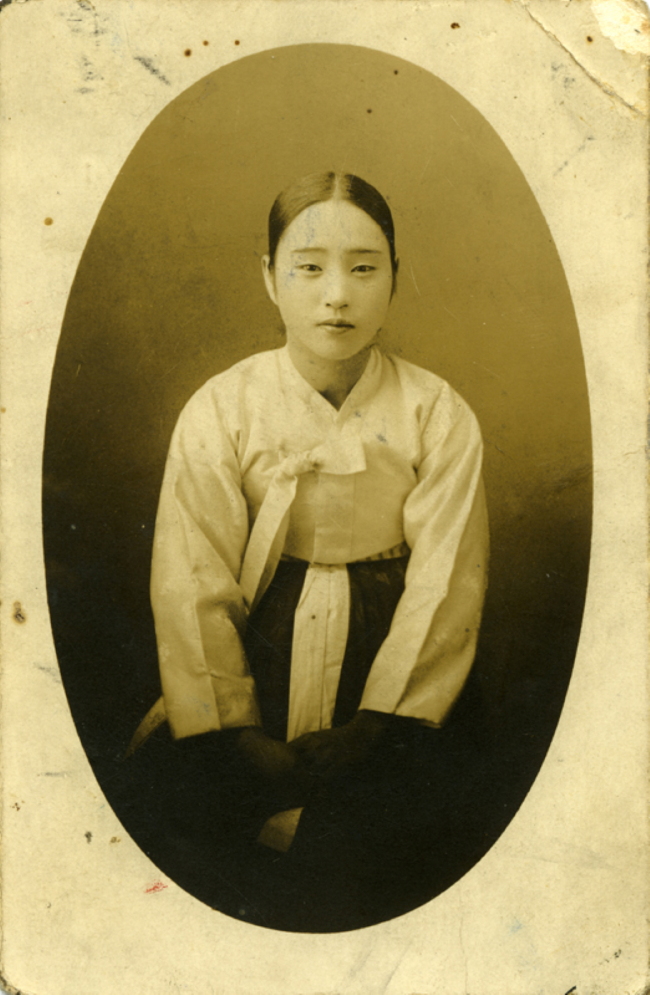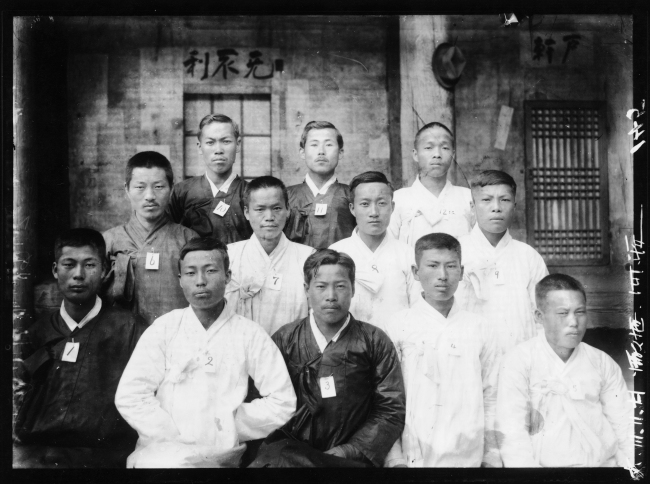The 2013 Seoul Photo Festival offers unique insight into Korea’s modern history with photos of individuals, families from 1880 to present
 “Worker,” 1995 (Seoul Photo Festival)
“Worker,” 1995 (Seoul Photo Festival)
The Seoul Photo Festival unveils a rare compilation of portraits of Seoul citizens that date back to 1883 as 2013 marks the 130th year since photography was first introduced in Korea.
The photo exhibition that opens this Friday will feature more than 600 portraits showing behind the scenes of major historical and social events in Seoul from the Japanese colonial era (1910-1945), the Korean War (1950-1953), rapid economic development (1960-1980) and diverse social aspects of today such as the shift to a multicultural society.
While portraits usually capture distinct characteristics of an individual, the portraits and snapshots on exhibit at Seoul Museum of Arts will offer a unique insight into the turbulent modern history of Korea.
The exhibition mainly presents the portrait photographs throughout two sections in chronological order.
 “A Female Portrait,” 1936 (Seoul Photo Festival)
“A Female Portrait,” 1936 (Seoul Photo Festival)
The earliest portrait dates from the early 1900s and features a man sitting on a chair in a fixed posture, which the festival notes as the pose of people featured in portrait paintings in Korea for hundreds of years.
The 1920s was when new portrait styles began to emerge with the establishment of many photo studios in Seoul. Poses became more relaxed and a studio photo features a student leaning against a high stool pretending to be answering the phone.
Portraits during the Japanese colonial era offer interesting findings. One group photo of 12 men on Geojaedo Island was taken as part of anthropological research by the famous Japanese anthropologist Torii Ryuzo. Ryuzo’s photos for his research have been questioned by some Korean historians as to whether they were staged to highlight unattractive features of Korean people to make them look “primitive and pre-modern.”
 Twelve men in Geojaedo Island taken for physical measurements for Japanese Anthopologist Torri Ryuzo’s study, 1914 (Seoul Photo Festival)
Twelve men in Geojaedo Island taken for physical measurements for Japanese Anthopologist Torri Ryuzo’s study, 1914 (Seoul Photo Festival)
Family portraits that range from a typical family image in a rural village to a multicultural family show the rapid changes Korean society has experienced under economic development.
Multicultural identity emerging in Korean society is also seen in the picture of a resident registration card of a half-Korean man whose name is Korean, but has different facial features.
Hundreds of ID pictures are compiled until they generate a clear face, pointing out the collective identity crisis in Korean society.
The festival displays personal wedding photographs of Seoul citizens taken from 1880-1980 that show interesting transition in wedding culture and style in Korea.
The photo exhibition runs from Nov. 1 to Dec. 1 at Seoul Museum of Art in Deoksugung-gil, Seoul.
For more information, visit seoulphotofestival.com.
By Lee Woo-young (wylee@heraldcorp.com)
http://www.koreaherald.com/view.php?ud=20131028000883